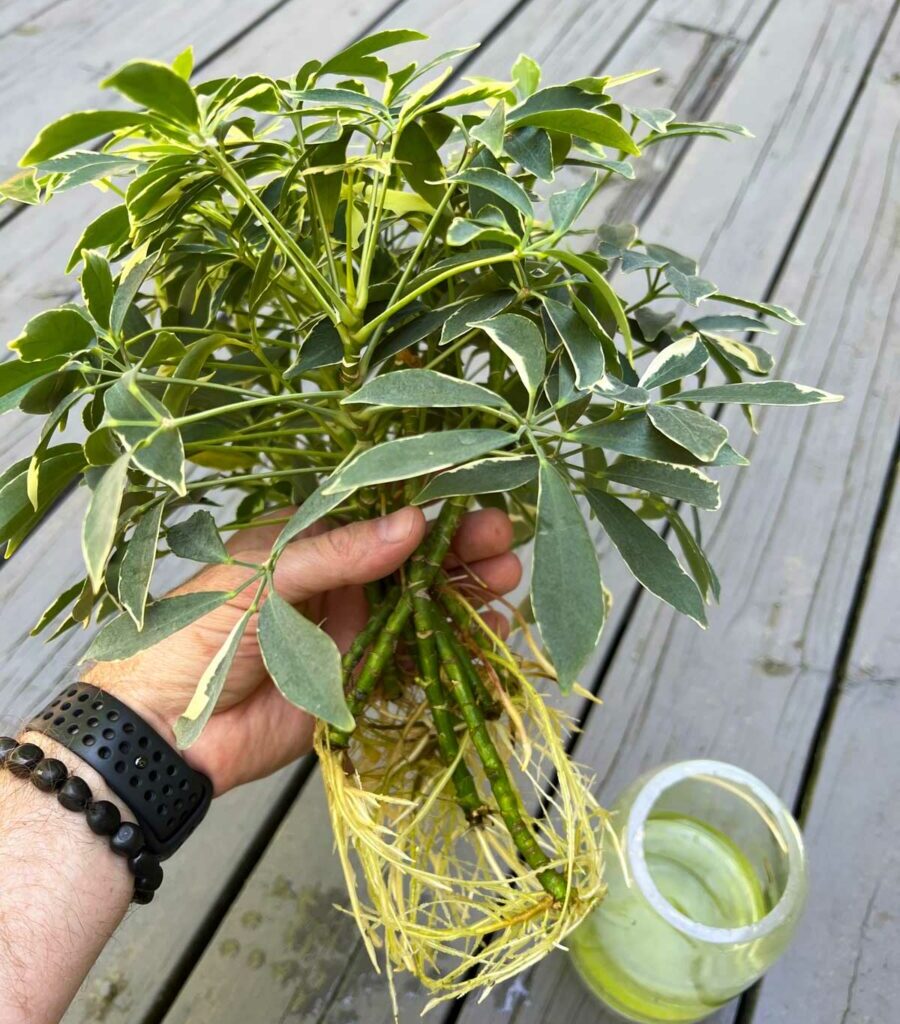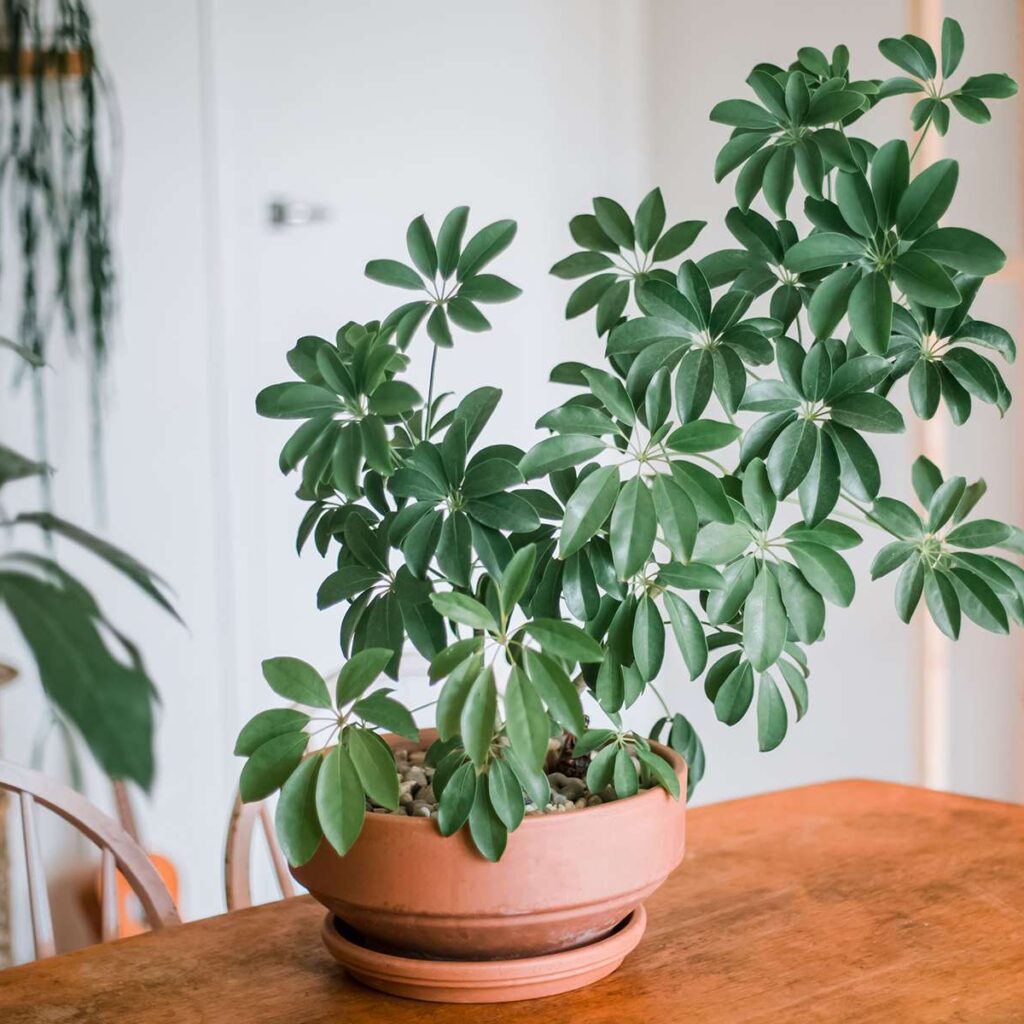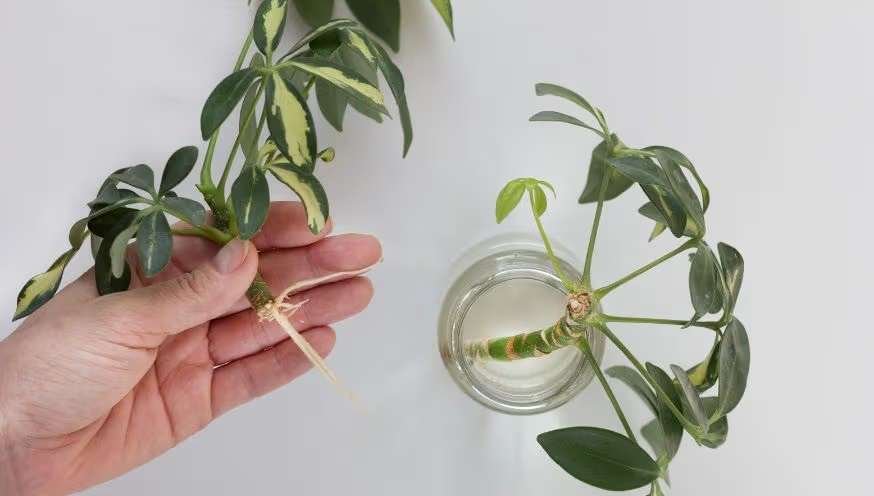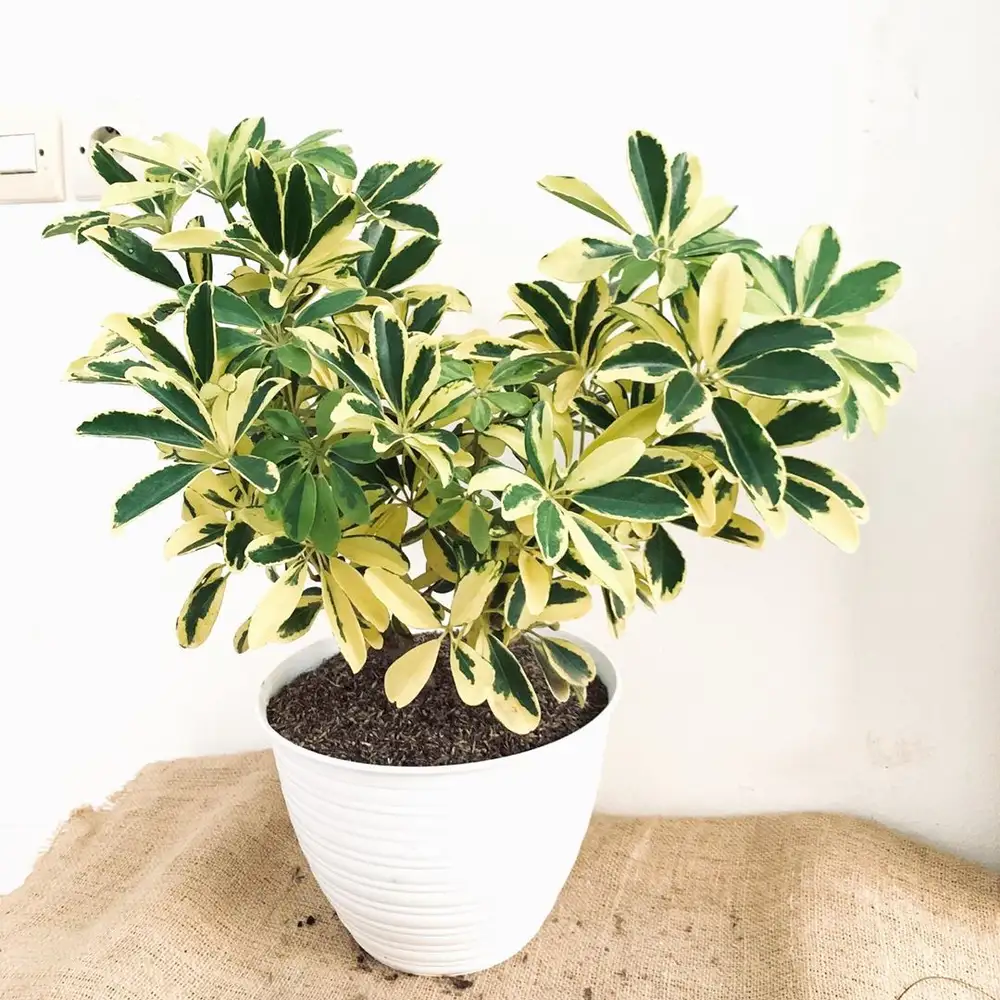The Umbrella Plant (Schefflera arboricola), with its glossy, umbrella-like clusters of leaves, is a popular houseplant beloved for its lush appearance and easygoing nature. Originating from the tropical and subtropical forests of Taiwan and Hainan, this plant thrives in bright, indirect light and moderately moist soil.
However, one of the most common mistakes made by both new and experienced plant owners is overwatering or underwatering. To keep an umbrella plant healthy and looking its best, it’s essential to understand its water requirements and how to adjust them based on changing environmental conditions.
In this article, we’ll answer the vital question:
How often should you water an umbrella plant?
We’ll also discuss the factors that influence watering frequency, signs of over- and underwatering, the best watering techniques, and helpful care tips to maintain a thriving umbrella plant at home or in the office.
Understanding the Umbrella Plant’s Natural Habitat

Knowing where a plant comes from can offer important clues about its watering needs:
- Native habitat: Tropical and subtropical forests of East Asia
- Preferred conditions: Warm, humid environments with consistent but not excessive soil moisture
- Drought tolerance: Moderate, though it dislikes prolonged dryness or consistently soggy soil
In its natural habitat, the umbrella plant grows in environments with frequent, light rainfall and well-draining soil, making it well-suited for regular but moderate watering indoors.
How Often Should You Water an Umbrella Plant?

General Watering Guidelines
- Indoor Umbrella Plants:
Water once every 7–10 days during the growing season (spring and summer), and every 10–14 days during the dormant season (autumn and winter). - Outdoor Potted Umbrella Plants:
Water every 5–7 days in warm months, depending on temperature and sunlight exposure, and reduce to every 10–14 days in cooler seasons.
Golden Rule:
Allow the top 1–2 inches of soil to dry out between waterings, then water deeply until it drains from the bottom of the pot.
Factors That Affect Umbrella Plant Watering Frequency
Several factors influence how often you should water your umbrella plant:
Season and Temperature
- Spring and Summer (Active Growth): Higher temperatures and longer days cause faster water evaporation, requiring more frequent watering.
- Autumn and Winter (Dormancy): Reduced light and cooler temperatures slow growth, meaning the plant requires less water.
Tip: Always check soil moisture before watering during winter months.
Soil Type and Drainage
- Well-draining soil is essential to prevent waterlogged roots.
- Use a lightweight potting mix containing perlite, peat, or orchid bark for optimal drainage.
Poorly draining soil retains moisture too long, increasing the risk of root rot.
Humidity Levels
- High humidity environments keep soil moist for longer, reducing the need for frequent watering.
- Dry indoor air, especially from heating systems, may cause faster soil drying.
Tip: Group your umbrella plant with other houseplants or use a humidity tray to maintain balanced humidity.
Plant Size and Pot Size
- Larger plants and small pots tend to dry out faster than larger containers.
- Adjust watering frequency based on the size of both the plant and its container.
Light Exposure
- Bright, indirect light encourages healthy growth and regular water uptake.
- Low light conditions slow water absorption, so reduce watering frequency accordingly.
How to Check If an Umbrella Plant Needs Water

Finger Test
Insert your finger 1–2 inches into the soil:
- If it feels dry, it’s time to water.
- If it’s still moist, wait a few more days.
Soil Moisture Meter
A soil moisture meter provides an accurate reading of moisture levels at the root zone. Water when the meter reads in the “dry” to “moist” range.
Visual Cues
- Drooping or curling leaves can indicate both overwatering and underwatering.
- Yellowing lower leaves usually suggest overwatering.
- Crisp, dry leaf edges often mean the plant is too dry.
Best Watering Techniques for Umbrella Plants
Water Thoroughly
Water until it runs out of the pot’s drainage holes, ensuring even soil saturation. Empty any excess water from saucers to prevent soggy roots.
Water at the Base
Avoid overhead watering, which can lead to fungal issues. Water directly at the soil surface.
Use Room Temperature Water
Cold water can shock the roots. Let tap water sit for 24 hours before using, or use filtered water to avoid fluoride and chlorine buildup.
Morning Watering
Water in the morning to allow excess moisture on leaves or soil surface to evaporate by evening, reducing the risk of mold and fungal problems.
Seasonal Watering Guide
| Season | Indoor Umbrella Plant | Outdoor Potted Umbrella Plant |
|---|---|---|
| Spring/Summer (Active Growth) | Every 7–10 days | Every 5–7 days |
| Autumn/Winter (Dormancy) | Every 10–14 days | Every 10–14 days |
Signs of Overwatering and Underwatering

Overwatering Symptoms
- Yellowing, soft, or dropping leaves
- Mushy, black roots (root rot)
- Mold or algae on soil surface
- Sour, musty-smelling soil
Solution:
Repot in fresh, well-draining soil, trim any affected roots, and reduce watering frequency.
Underwatering Symptoms
- Drooping, crispy leaves
- Dry, compacted soil pulling away from the pot’s edges
- Brown leaf tips and edges
Solution:
Water deeply, allow excess water to drain, and increase watering frequency in warm, dry conditions.
Special Watering Tips for Umbrella Plants
Improve Humidity
Use a humidity tray, room humidifier, or mist the leaves occasionally in dry indoor environments.
Check Drainage Regularly
Ensure that pots have working drainage holes and that soil remains aerated to avoid water buildup at the bottom.
Reduce Watering After Repotting
Freshly repotted umbrella plants should be watered lightly until they acclimate, then gradually return to a regular schedule.
Avoid Watering on a Fixed Schedule
Check soil moisture each time before watering to prevent overwatering.
Group Plants Together
Grouping plants can help create a microclimate of higher humidity, reducing how quickly the soil dries out.
Common Watering Mistakes to Avoid

- Watering too frequently in winter
- Using heavy, poorly draining soil
- Letting water accumulate in saucers
- Neglecting plants during hot weather spikes
- Overhead watering leading to mold and mildew issues
Conclusion
The Umbrella Plant is an attractive, forgiving houseplant that thrives with moderate, consistent watering. While it appreciates evenly moist soil, it strongly dislikes being waterlogged or left bone dry for extended periods.
As a general rule:
- Water every 7–10 days indoors during the active growing season.
- Reduce watering to every 10–14 days during winter dormancy.
- Always let the top 1–2 inches of soil dry out before watering again.
By paying attention to environmental factors like temperature, humidity, and light, and monitoring soil moisture carefully, you can keep your umbrella plant healthy, lush, and vibrant all year round.





